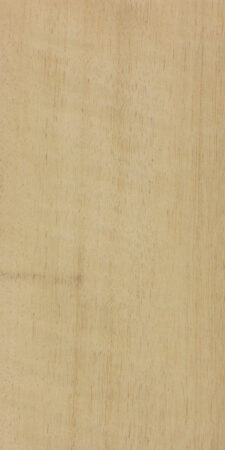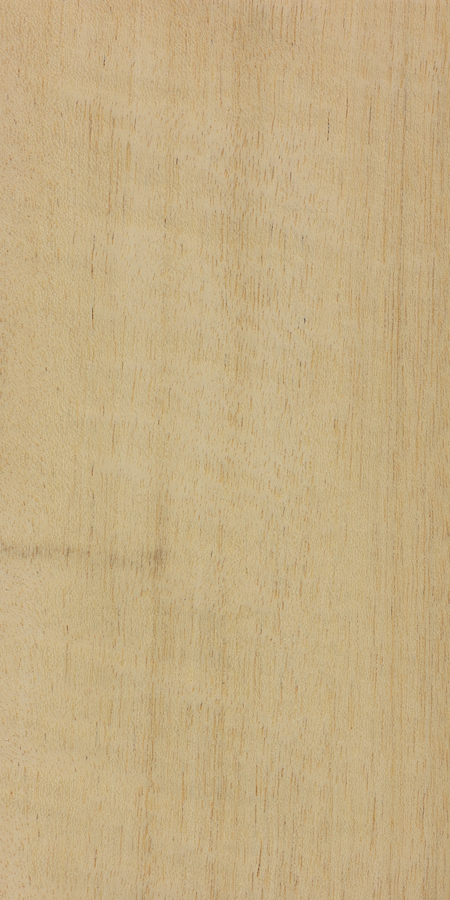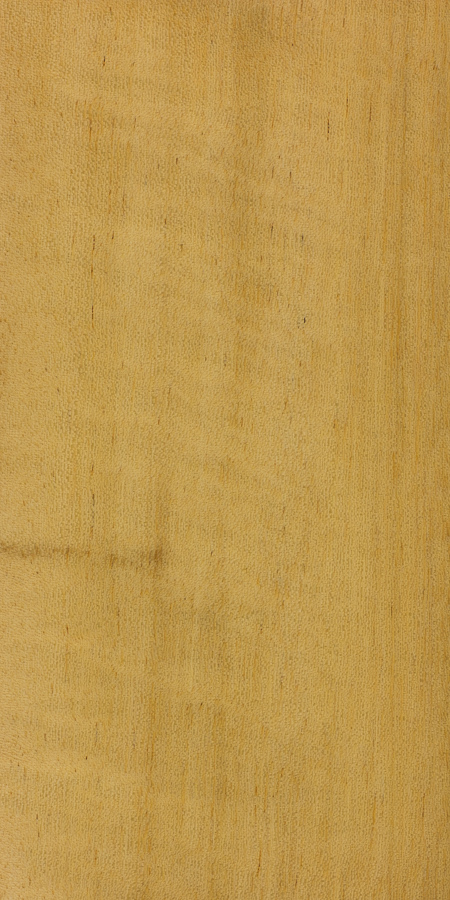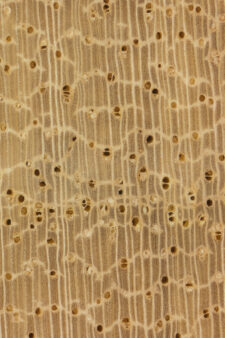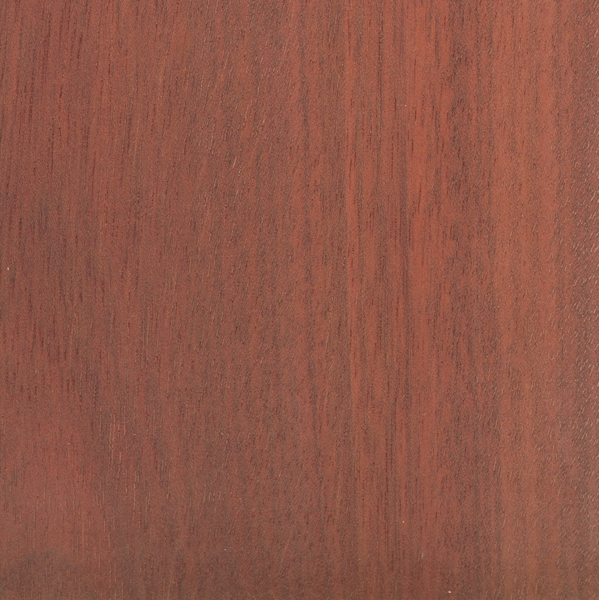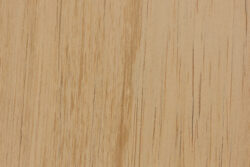Common Name(s): Breadnut, ramon, capomo
Scientific Name: Brosimum alicastrum
Distribution: Southern Mexico, Central America, and northern South America
Tree Size: 100-120 ft (30-37 m) tall,
3-4 ft (1-1.2 m) trunk diameter
Average Dried Weight: 46.9 lbs/ft3 (750 kg/m3)
Specific Gravity (Basic, 12% MC): .62, .75
Janka Hardness: 1,520 lbf (6,760 N)
Modulus of Rupture: 16,330 lbf/in2 (112.6 MPa)
Elastic Modulus: 2,084,000 lbf/in2 (14.37 GPa)
Crushing Strength: 9,950 lbf/in2 (68.6 MPa)
Shrinkage: Radial: 5.4%, Tangential: 9.2%,
Volumetric: 14.6%, T/R Ratio: 1.7
Color/Appearance: Heartwood and sapwood are both a pale yellow to light brown and are indistinguishable from each other. Another variety called ramon colorado can have a darker orangish brown false heartwood, often with darker streaks (frequency and extent of this coloration depends on growing conditions and age of tree). Sapwood is prone to fungal staining if not dried properly.
Grain/Texture: Grain is usually straight, or irregular and shallowly interlocked, with a medium to fine texture. Moderate to high natural luster.
Rot Resistance: Non-durable; poor resistance to decay or insect attack.
Workability: Can be difficult to work with hand tools on account of its grain and density—as well as a reported silica content of .68%, which can prematurely dull cutters. Irregular or interlocked grain can pose a challenge when machining, otherwise it has good machinability in straight-grained material. Glues, stains, and finishes well.
Odor: No characteristic odor.
Allergies/Toxicity: Besides the standard health risks associated with any type of wood dust, no further health reactions have been associated with breadnut. See the articles Wood Allergies and Toxicity and Wood Dust Safety for more information.
Pricing/Availability: Not commonly available as exported lumber. The wood is more commonly harvested and used locally.
Sustainability: This wood species is not listed in the CITES Appendices, and the primary species, Brosimum alicastrum, is not on the IUCN Red List. Another species within this grouping, B. costaricanum, is listed as being a species of least concern
Common Uses: Veneer, furniture, cabinetry, flooring, and general construction.
Comments: Called breadnut as the trees yield edible nuts that can be ground into a meal and made into bread, and were theorized to be a staple food source for the Mayan civilization.[1]Flannery, K. V. (Ed.). (2014). Maya subsistence: Studies in memory of Dennis E. Puleston. Elsevier.
In stark contrast to the much heavier woods in the genus, like bloodwood and snakewood, the lighter colored commercial Brosimum species are divided into two groups based on density, the lighter utile group, and the heavier alicastrum group. Breadnut represents the heavier alicastrum group. Though Brosimum alicastrum is the most common species associated with breadnut, the grouping also includes B. costaricanum.
Images: Drag the slider up/down to toggle between raw and finished wood.
Identification: See the article on Hardwood Anatomy for definitions of endgrain features.
Porosity: diffuse porous
Arrangement: solitary and radial multiples
Vessels: medium to large, few to moderately numerous
Parenchyma: winged (and occasionally confluent)
Rays: medium width; normal spacing
Lookalikes/Substitutes: Sande (Brosimum utile) is a related species with a very similar appearance and anatomy, though sande wood tends to have a lower density than breadnut. Ramin (Gonystylus spp.) is another wood with similar appearance and anatomy (including winged parenchyma) as well as similar density. But ramin can sometimes have an unpleasant odor when rewetted, while the aforementioned Brosimum species usually lack a distinct odor.
Notes: None.
Related Content:

